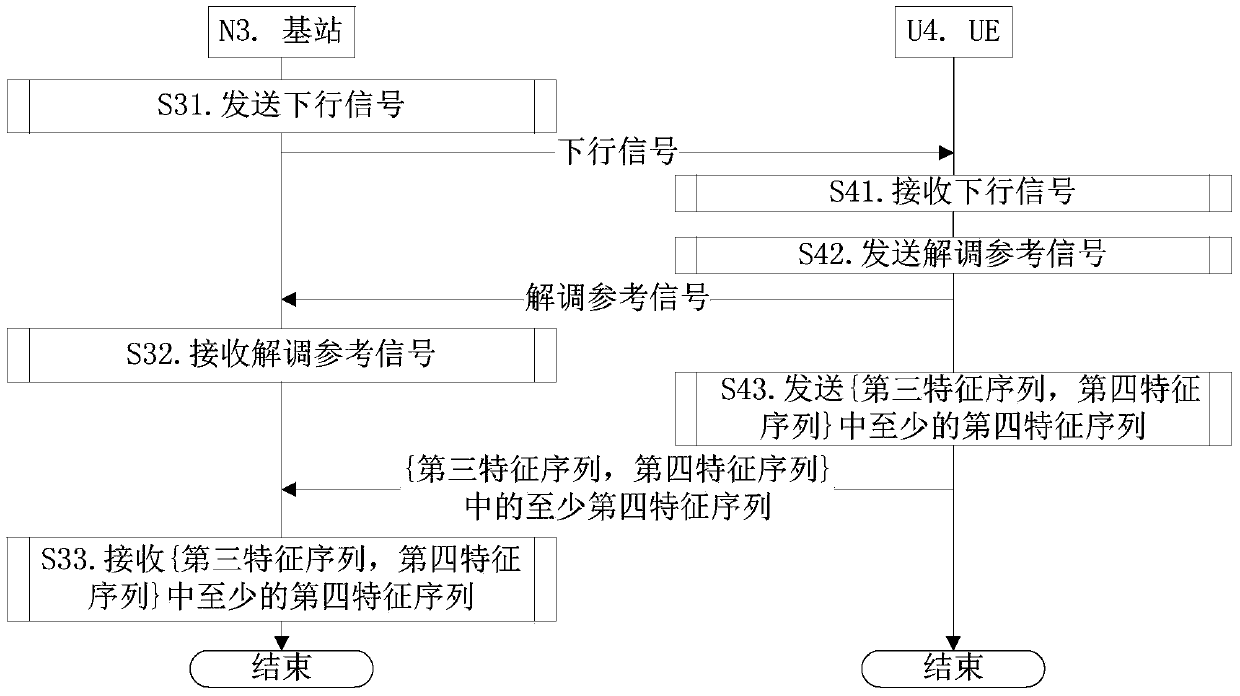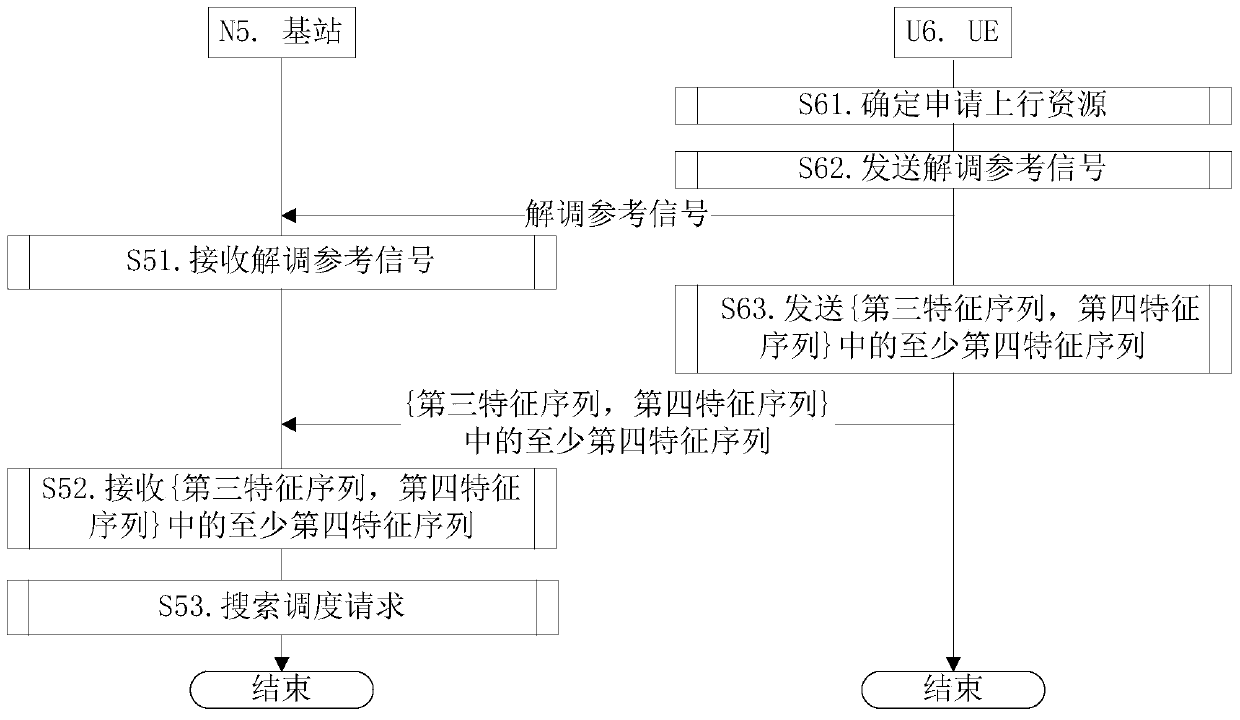Method and device for narrowband wireless communication
A wireless communication, narrowband technology, applied in signaling allocation, transmission path sub-channel allocation, digital transmission system, etc., can solve the problems of occupying too many subframes, unable to guarantee the orthogonality of uplink signals, increasing system delay, etc.
- Summary
- Abstract
- Description
- Claims
- Application Information
AI Technical Summary
Problems solved by technology
Method used
Image
Examples
Embodiment 1
[0176]Embodiment 1 shows a flow chart of transmission of a feature sequence according to the present invention;
[0177] , as attached figure 1 shown. attached figure 1 In , the base station N1 is the maintenance base station of the serving cell of the UE U2. The steps identified in boxes F1 to F5 are optional steps.
[0178] For the base station N1, the first signaling is sent in step S11, and the first signaling indicates the first resource set.
[0179] Wherein, the first resource set occupies M time windows in the time domain. The bandwidth occupied by the first resource set in the frequency domain within a time window is less than or equal to 180 kHz. The signature sequence occupies part of the time-frequency resources in the first resource set. Said M is a positive integer. The first resource set is used to transmit uplink signals other than uplink data. The first resource set includes at least one of {first resource space, second resource space, third resource s...
Embodiment 2
[0193] Embodiment 2 illustrates a flowchart of a fourth characteristic sequence transmission according to the present invention; as attached figure 2 shown. attached figure 2 In , the base station N3 is the maintenance base station of the serving cell of the UE U4.
[0194] For the base station N3, a downlink signal is sent in step S31.
[0195] Wherein, the downlink signal includes D transmission blocks, and the fourth signature sequence indicates whether the D transmission blocks are correctly decoded. The fourth characteristic sequence occupies L1 resource units in the F4 subcarriers. The demodulation reference signal occupies L2 resource units in the F4 subcarriers. L1 and L2 are positive integers.
[0196] For UE U4, a downlink signal is received in step S41.
[0197] For UE U4, in step S42, the demodulation reference signal is sent in the first set of resources.
[0198] Wherein, the fourth characteristic sequence and the demodulation reference signal are sent b...
Embodiment 3
[0203] Embodiment 3 illustrates a flow chart of yet another fourth characteristic sequence transmission according to the present invention; as attached image 3 shown. attached image 3 In , the base station N5 is the maintenance base station of the serving cell of the UE U6.
[0204] For UE U6, it is determined to apply for uplink resources in step S61.
[0205] For UE U6, in step S62, the demodulation reference signal is sent in the first set of resources.
[0206] For the base station N5, the demodulation reference signal is received in the first set of resources in step S51.
[0207] For UE U6, at least a fourth signature sequence in {third signature sequence, fourth signature sequence} is sent in step S63.
[0208] For the base station N5, at least a fourth signature sequence in {third signature sequence, fourth signature sequence} is received in step S52.
[0209] For base station N5, a scheduling request is searched in step S53.
PUM
 Login to View More
Login to View More Abstract
Description
Claims
Application Information
 Login to View More
Login to View More - R&D
- Intellectual Property
- Life Sciences
- Materials
- Tech Scout
- Unparalleled Data Quality
- Higher Quality Content
- 60% Fewer Hallucinations
Browse by: Latest US Patents, China's latest patents, Technical Efficacy Thesaurus, Application Domain, Technology Topic, Popular Technical Reports.
© 2025 PatSnap. All rights reserved.Legal|Privacy policy|Modern Slavery Act Transparency Statement|Sitemap|About US| Contact US: help@patsnap.com



